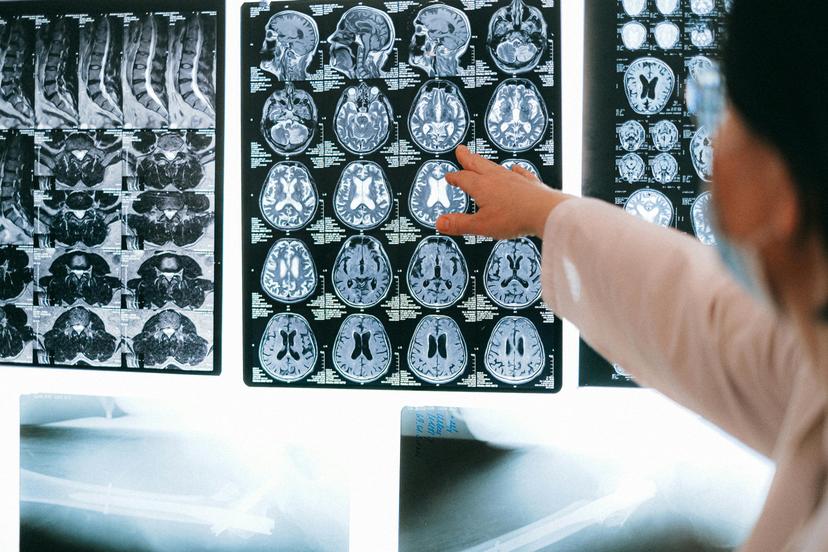
Understanding Bentall Surgery: A Comprehensive Overview
16 Oct, 2023
 Healthtrip Team
Healthtrip TeamBentall Surgery
Bentall Surgery, named after its pioneering surgeon Hugh Bentall, is a complex and advanced cardiovascular procedure designed to address severe conditions affecting the aorta and aortic valve. This surgical technique involves the replacement of the aortic root, which includes the aortic valve and the section of the aorta closest to the heart, with a composite graft. The graft typically consists of a synthetic tube and a mechanical or biological valve, aiming to restore normal blood flow and prevent life-threatening complications associated with aortic pathology.
Most popular procedures in India
Purpose and Indications of Bentall Surgery
Wellness Treatments
Give yourself the time to relax
Lowest Prices Guaranteed!

Lowest Prices Guaranteed!
A. Why Bentall Surgery is Performed
Bentall Surgery is undertaken to address complex and serious conditions affecting the aorta and aortic valve. The primary reasons for performing Bentall Surgery include:
1, Aortic Aneurysm:
- Dilation of the Aortic Root: When the aortic root expands or forms an aneurysm, it can lead to the weakening of the aortic wall, posing a risk of rupture. Bentall Surgery is performed to replace the weakened aortic root and prevent potential life-threatening complications.
- Tearing of the Aortic Wall: In cases of aortic dissection, where there is a tear in the inner layer of the aortic wall, Bentall Surgery may be necessary to replace the damaged segment and restore normal blood flow.
- Aortic Valve Dysfunction: When there is concomitant aortic valve pathology, such as severe regurgitation or stenosis, Bentall Surgery allows for the replacement of both the aortic root and the valve with a composite graft.
- Marfan Syndrome and Related Conditions: Patients with genetic connective tissue disorders, such as Marfan syndrome, may undergo Bentall Surgery to address aortic root dilation and mitigate the risk of aortic complications.
- Complications from Prior Procedures: Individuals who have undergone previous aortic surgeries, such as aortic valve replacement, and subsequently experience complications or failure may require Bentall Surgery for comprehensive aortic reconstruction.
B. Who may Require Bentall Surgery
Bentall Surgery is typically recommended for individuals who fall into the following categories:
1. Severe Aortic Pathology:
Patients with severe aortic root dilation, aneurysm, or dissection that poses a high risk of rupture or further complications.
2. Combined Aortic and Valve Pathology:
Those with concurrent aortic valve dysfunction, where replacement of both the aortic root and valve is necessary for optimal outcomes.
3. Genetic Connective Tissue Disorders:
Individuals diagnosed with hereditary conditions affecting connective tissues, particularly those predisposing them to aortic pathology.
4. Complications from Previous Procedures:
Patients who have undergone prior aortic surgeries and experience complications or failure that necessitates more extensive intervention.
5. High-Risk Patient Groups:
Individuals at high risk of aortic complications due to factors such as family history, known genetic predispositions, or the presence of other cardiovascular risk factors.
You may like to read: What is a Bentall surgery and who requires it? (healthtrip.com)
Procedure Overview
A. Before Bentall Surgery
1. Patient Evaluation and Selection Criteria
Before undergoing Bentall Surgery, a thorough patient evaluation is conducted to assess the individual's overall health, cardiovascular condition, and suitability for the procedure. This evaluation involves a detailed medical history review, physical examinations, and diagnostic tests. Cardiac imaging studies, such as echocardiography and cardiac MRI, are crucial in determining the extent of aortic pathology and the need for surgery. The evaluation also considers the patient's age, comorbidities, and overall fitness to ensure that the benefits of the surgery outweigh the potential risks.
Patients selected for Bentall Surgery typically exhibit one or more of the following criteria:
- Aortic aneurysm involving the aortic root
- Aortic dissection affecting the aortic root
- Aortic valve pathology, especially in the presence of aortic root dilation
- Connective tissue disorders, such as Marfan syndrome
- Failed previous aortic valve or root surgery
The multidisciplinary medical team, including cardiologists, cardiac surgeons, and anesthesiologists, collaborates to make a well-informed decision regarding the appropriateness of Bentall Surgery for the individual patient.
2. Preoperative Preparations and Testing
Preoperative preparations commence once the decision for Bentall Surgery is made. These preparations involve a series of tests and procedures to ensure the patient's readiness for surgery and to optimize outcomes.
a. Cardiac Assessment: In addition to imaging studies, cardiac catheterization may be performed to assess coronary artery status and overall cardiac function.
b. Blood Tests: Comprehensive blood tests are conducted to assess baseline health parameters, including blood count, coagulation profile, and biochemical markers.
c. Infection Screening: Patients undergo screening for potential infections, such as bacterial endocarditis, to minimize the risk of postoperative complications.
d. Medication Adjustment: Medications that may interfere with the surgery or pose increased bleeding risks, such as anticoagulants, are adjusted or temporarily discontinued.
e. Nutritional Assessment: Malnutrition can impact recovery, so nutritional status is evaluated, and dietary adjustments are made as necessary.
B. During Bentall Surgery
1. Surgical Team and Equipment
Bentall Surgery is a complex cardiac procedure that requires a highly skilled and coordinated surgical team. The team typically includes:
a. Cardiac Surgeon: Specialized in cardiovascular surgery and experienced in aortic root replacement procedures.
b. Cardiac Anesthesiologist: Manages anesthesia and monitors the patient's vital signs throughout the surgery.
c. Perfusionist: Manages the heart-lung machine, ensuring blood circulation while the heart is temporarily stopped.
d. Scrub Nurses and Operating Room Technicians: Assist the surgeon during the procedure by handling instruments and maintaining a sterile environment.
e. Cardiologist: May be consulted for real-time assessment of cardiac function, especially if there are concerns about coronary artery involvement.
The surgical team works collaboratively, with each member playing a crucial role in the success of the procedure. Advanced monitoring equipment, including echocardiography, is used to provide real-time feedback on cardiac function during the surgery. The operating room is equipped with specialized instruments and devices specifically designed for cardiac procedures.
2. Anesthesia Considerations
Anesthesia for Bentall Surgery involves careful considerations to ensure patient safety and facilitate the surgical process. Key aspects of anesthesia management include:
a. Induction: The patient is carefully induced with anesthesia, and a breathing tube is inserted to facilitate mechanical ventilation.
b. Maintenance: Anesthesia is maintained throughout the surgery to keep the patient unconscious and pain-free. Hemodynamic stability is closely monitored.
c. Temperature Control: Body temperature is controlled to prevent hypothermia, which can be a concern during cardiopulmonary bypass.
d. Anticoagulation: Heparin is administered to prevent blood clotting during the use of the heart-lung machine.
e. Blood Pressure Management: Close monitoring and management of blood pressure are essential to ensure adequate perfusion to vital organs.
Anesthesia is a critical aspect of Bentall Surgery, as it not only ensures the comfort of the patient but also facilitates the precise execution of the surgical steps.
3. Surgical Steps and Techniques
Bentall Surgery involves several key steps:
a. Aortic Root Excision: The diseased aortic root is carefully excised, and any associated pathology, such as aortic valve disease, is addressed.
b. Replacement with a Composite Graft: The excised aortic root is replaced with a composite graft, which includes a mechanical or biological valve and a synthetic tube that serves as the new aortic root.
c. Coronary Artery Reimplantation: If necessary, the coronary arteries are reimplanted into the graft to ensure proper blood supply to the heart.
d. Closure: The graft is securely sewn in place, and meticulous closure of the surgical incisions is performed.
Throughout the procedure, the surgical team works with precision and coordination, and advanced technologies, such as intraoperative echocardiography, may be utilized to verify the success of the graft placement and assess overall cardiac function.
C. After Bentall Surgery
1. Postoperative Care and Monitoring
Following Bentall Surgery, comprehensive postoperative care is essential to support the patient's recovery. Key aspects of postoperative care include:
a. Intensive Care Unit (ICU) Stay: Patients are initially transferred to the ICU for close monitoring of vital signs, cardiac function, and overall recovery.
b. Ventilator Support: Mechanical ventilation may be required initially, and the weaning process is carefully managed based on the patient's respiratory status.
c. Hemodynamic Monitoring: Continuous monitoring of blood pressure, heart rate, and other vital signs is conducted to ensure stability.
d. Pain Management: Adequate pain control is provided to enhance comfort and facilitate early mobilization.
e. Fluid and Electrolyte Balance: Intravenous fluids and electrolyte balance are closely managed to optimize cardiovascular function.
f. Blood Clot Prevention: Measures to prevent blood clots, such as anticoagulant medications and compression devices, are initiated.
g. Wound Care: Monitoring and care of surgical incisions to prevent infection and promote healing.
h. Nutritional Support: Nutritional support is provided as needed to promote healing and recovery.
D. Latest Advancements in Bentall Surgery
1. Technological Innovations in Bentall Surgery
a. Minimally Invasive Approaches: There is ongoing research and development in making Bentall Surgery less invasive. Minimally invasive techniques, such as robotic-assisted surgery and thoracoscopic approaches, are being explored to reduce the impact of surgery on patients, potentially leading to shorter recovery times and fewer complications.
b. 3D Printing Technology: Advanced imaging and 3D printing are being employed to create patient-specific models of the aorta. Surgeons can use these models to plan and practice the surgery beforehand, enhancing precision and efficiency during the actual procedure.
c. Augmented Reality (AR) and Virtual Reality (VR): AR and VR technologies are being integrated into the preoperative planning and intraoperative phases. Surgeons can use these technologies for enhanced visualization and navigation during the surgery.
d. Intraoperative Imaging: High-resolution imaging technologies, such as intraoperative echocardiography and fluoroscopy, are continually improving. These tools assist surgeons in real-time decision-making and ensure the accuracy of graft placement.
e. Biological Grafts and Tissue Engineering: Research is exploring the use of biological grafts and tissue engineering to create more durable and biocompatible replacement materials. This may lead to grafts that integrate more seamlessly with the patient's natural tissues and have longer lifespans.
2. Emerging Trends and Research
a. Genetic and Molecular Studies: Advances in genetics and molecular biology are contributing to a deeper understanding of the genetic factors that predispose individuals to aortic diseases. This knowledge may lead to personalized treatment strategies and earlier interventions.
b. Stem Cell Therapy: Research is underway to explore the use of stem cells in promoting tissue regeneration and repair after Bentall Surgery. This may contribute to better outcomes and reduced complications.
c. Artificial Intelligence (AI): AI is being applied to analyze large datasets, improving diagnostic accuracy and predicting patient outcomes. AI algorithms may assist in identifying high-risk patients who may benefit from early intervention.
d. Long-Term Outcomes Studies: There is an increased focus on conducting long-term outcomes studies to assess the durability and success of Bentall Surgery over extended periods. This information is vital for refining surgical techniques and optimizing patient care.
e. Drug Therapies: Researchers are investigating pharmaceutical interventions to slow the progression of aortic diseases, potentially reducing the need for surgical interventions in some cases.
These advancements and emerging trends in Bentall Surgery reflect the dynamic nature of cardiovascular research and the ongoing commitment to improving patient outcomes through innovation and scientific discovery
Risks and Complications in Bentall Surgery
- Bleeding: Excessive bleeding during or after Bentall Surgery is a critical risk, potentially requiring blood transfusions or additional interventions.
- Infection: Surgical site infections or systemic infections, including bacterial endocarditis, pose a significant risk postoperatively.
- Arrhythmias: Irregular heart rhythms may occur, necessitating close monitoring and potential intervention to restore normal cardiac function.
- Organ Dysfunction: Kidney or lung dysfunction due to surgical stress is a serious concern, requiring vigilant monitoring and supportive measures.
- Graft Complications: Issues with the graft, such as leaks or kinks, can impact the success of the surgery, emphasizing the importance of regular imaging and monitoring.
Bentall Surgery stands as an essential intervention for severe aortic and valvular conditions, evolving with advancements in cardiovascular medicine. Despite potential risks, the procedure offers hope through proven efficacy and meticulous care. Emphasizing ongoing medical support, Bentall Surgery reflects the continual progress in cardiac care, embodying resilience and healing for patients facing complex cardiovascular challenges.
Related Blogs

Best Heart Bypass Surgery Packages on Healthtrip 2025
Explore top heart bypass surgery packages on Healthtrip for 2025.

Top Cardiologists in India for a Healthy Heartbeat
Get a healthy heartbeat with the top cardiologists in India

The Rise of Apollo Hospitals as a Premier Destination for Cardiac Treatment
Discover why Apollo Hospitals is the preferred choice for cardiac

Experience World-Class Cardiac Care at Fortis Escorts
Get the best cardiac treatment at Fortis Escorts Heart Institute

The Cutting-Edge of Medicine: Deep Brain Stimulation
Explore the latest advancements and innovations in Deep Brain Stimulation,

Pacemaker Implantation in the Elderly: What to Expect
Learn about the unique considerations and benefits of pacemaker implantation










